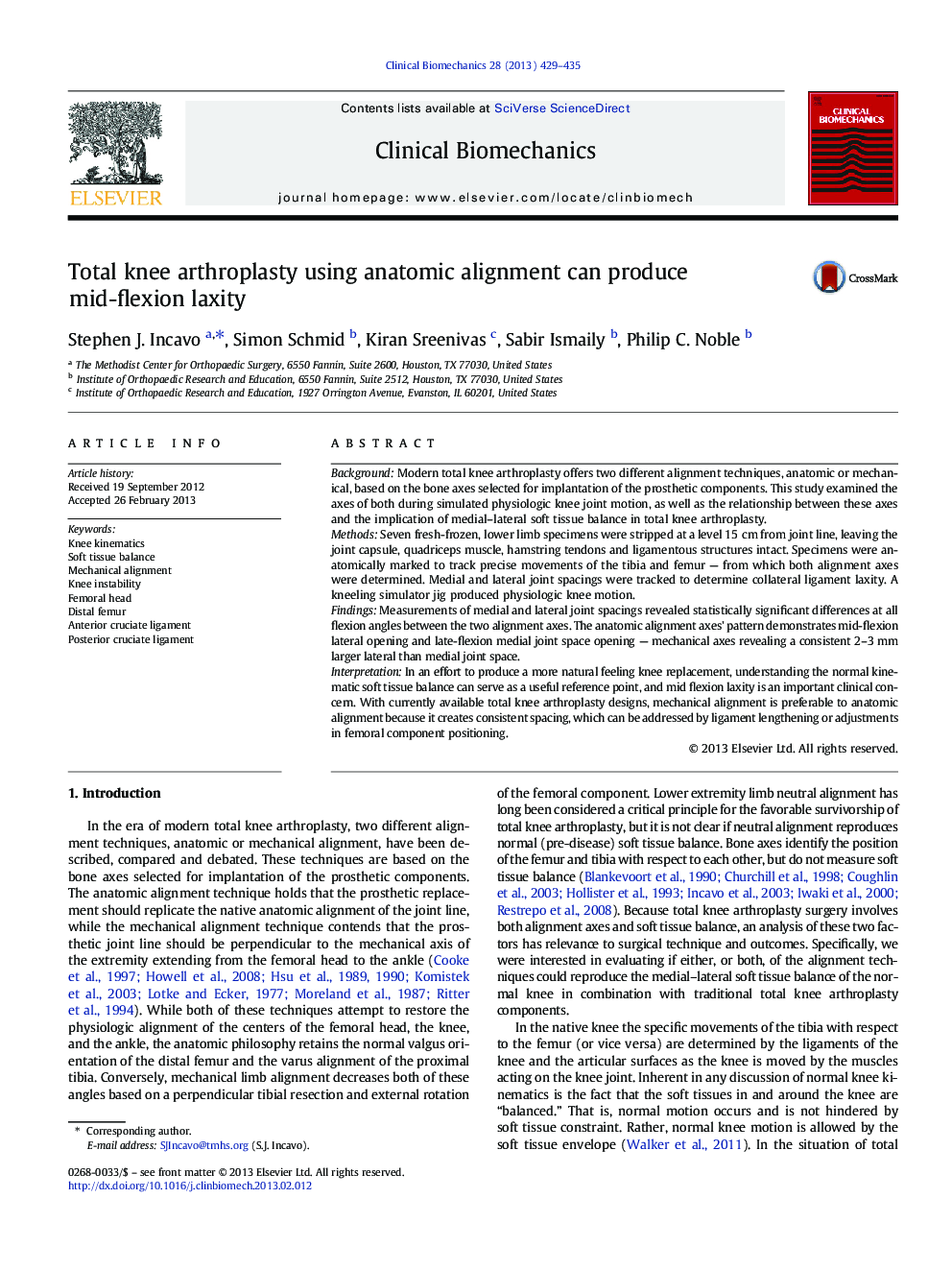| Article ID | Journal | Published Year | Pages | File Type |
|---|---|---|---|---|
| 6204948 | Clinical Biomechanics | 2013 | 7 Pages |
BackgroundModern total knee arthroplasty offers two different alignment techniques, anatomic or mechanical, based on the bone axes selected for implantation of the prosthetic components. This study examined the axes of both during simulated physiologic knee joint motion, as well as the relationship between these axes and the implication of medial-lateral soft tissue balance in total knee arthroplasty.MethodsSeven fresh-frozen, lower limb specimens were stripped at a level 15Â cm from joint line, leaving the joint capsule, quadriceps muscle, hamstring tendons and ligamentous structures intact. Specimens were anatomically marked to track precise movements of the tibia and femur - from which both alignment axes were determined. Medial and lateral joint spacings were tracked to determine collateral ligament laxity. A kneeling simulator jig produced physiologic knee motion.FindingsMeasurements of medial and lateral joint spacings revealed statistically significant differences at all flexion angles between the two alignment axes. The anatomic alignment axes' pattern demonstrates mid-flexion lateral opening and late-flexion medial joint space opening - mechanical axes revealing a consistent 2-3Â mm larger lateral than medial joint space.InterpretationIn an effort to produce a more natural feeling knee replacement, understanding the normal kinematic soft tissue balance can serve as a useful reference point, and mid flexion laxity is an important clinical concern. With currently available total knee arthroplasty designs, mechanical alignment is preferable to anatomic alignment because it creates consistent spacing, which can be addressed by ligament lengthening or adjustments in femoral component positioning.
